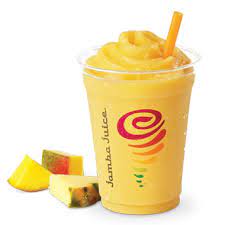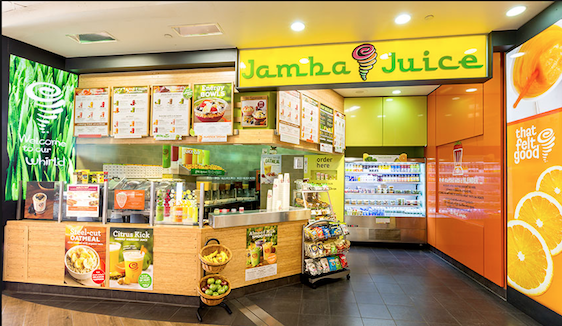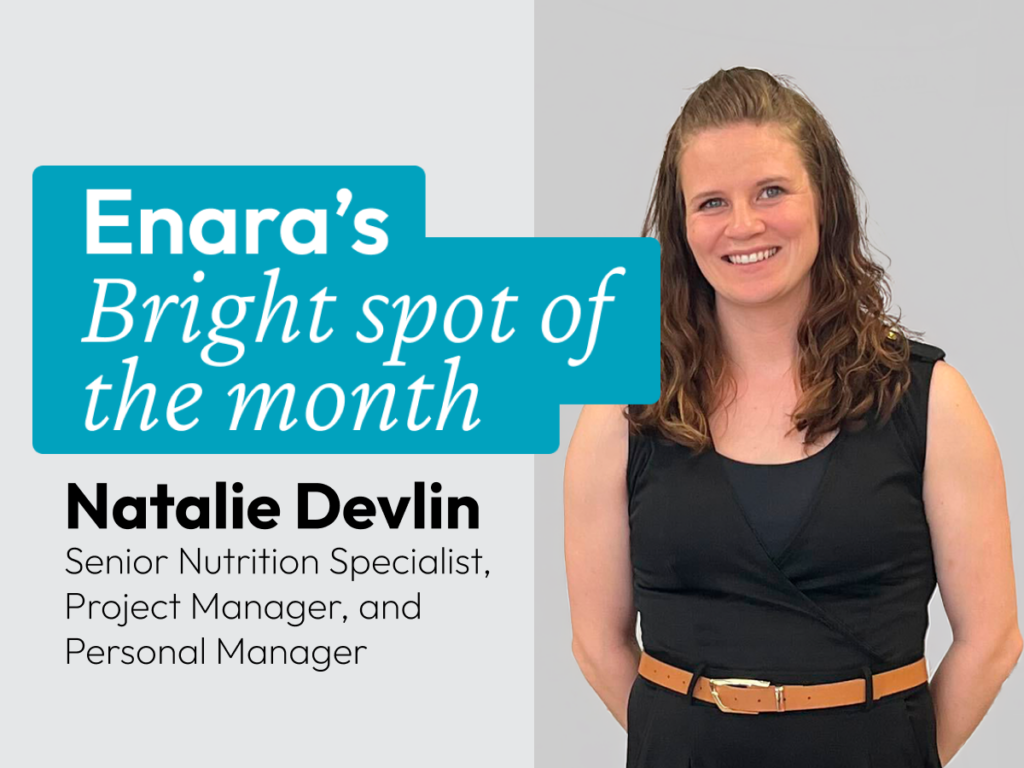Jamba Juice has always been the popular go-to for a quick “healthy” treat, but what is really in a cup of Jamba?
Let’s take a closer look at their small “Mango-A-Go-Go” smoothie:

- The ingredients include “Passion Fruit-Mango Juice Blend, Mangos, Pineapple Sherbet (Contains Milk), Ice”. One small smoothie provides 300 calories but where are all of these calories coming from? It’s the sugar from the juice, mangoes and sherbet (which is basically more fruit and sugar together). These ingredients combined into one small smoothie will give you 66g of sugar. If we convert 66g of sugar into teaspoons, we have 16.5 teaspoons of sugar. As a general rule, men should limit their added sugar intake to 9 teaspoons per day and women should limit sugar intake to 6 teaspoons per day. This means that men would be over by 7.5 tsp, while women are over 10.5 tsp for the day from one smoothie.
- Low in fiber: With mangoes being second on the ingredients list, you are getting more juice than fruit with your smoothie and lack dietary fiber. With 2g of dietary fiber, you would still need to eat more fiber to meet 15g (average for most Americans); which is half the Recommended Dietary Allowance. Dietary fiber is important to slow the absorption of carbohydrates in the body to avoid high sugar spikes.
- What are the benefits? Low saturated fat, cholesterol, and sodium. High in vitamin A and C. However, If you recall from the “To Blend, or not to Blend” post, Vitamin A and Vitamin C are heat sensitive and can be lost in the blending process (which can create lots of heat).
What to eat instead: Try to eat whole fruits and vegetables so you can see how much food you are actually eating. By focusing on the whole food, you can get more fiber and vitamins that you would be missing from the blending process. Though it is easier to drink your food, you are consuming a lot more calories and sugar than intended. For less than 300 calories, you can try recipes that have fruits such as “Overnight Oats”, “Quinoa Breakfast Bowls” or “Yogurt with Berries” (these recipes can be found in our VLCD Guide). This is a great way to incorporate more nutrients into your diet while getting the most bang for your buck.



